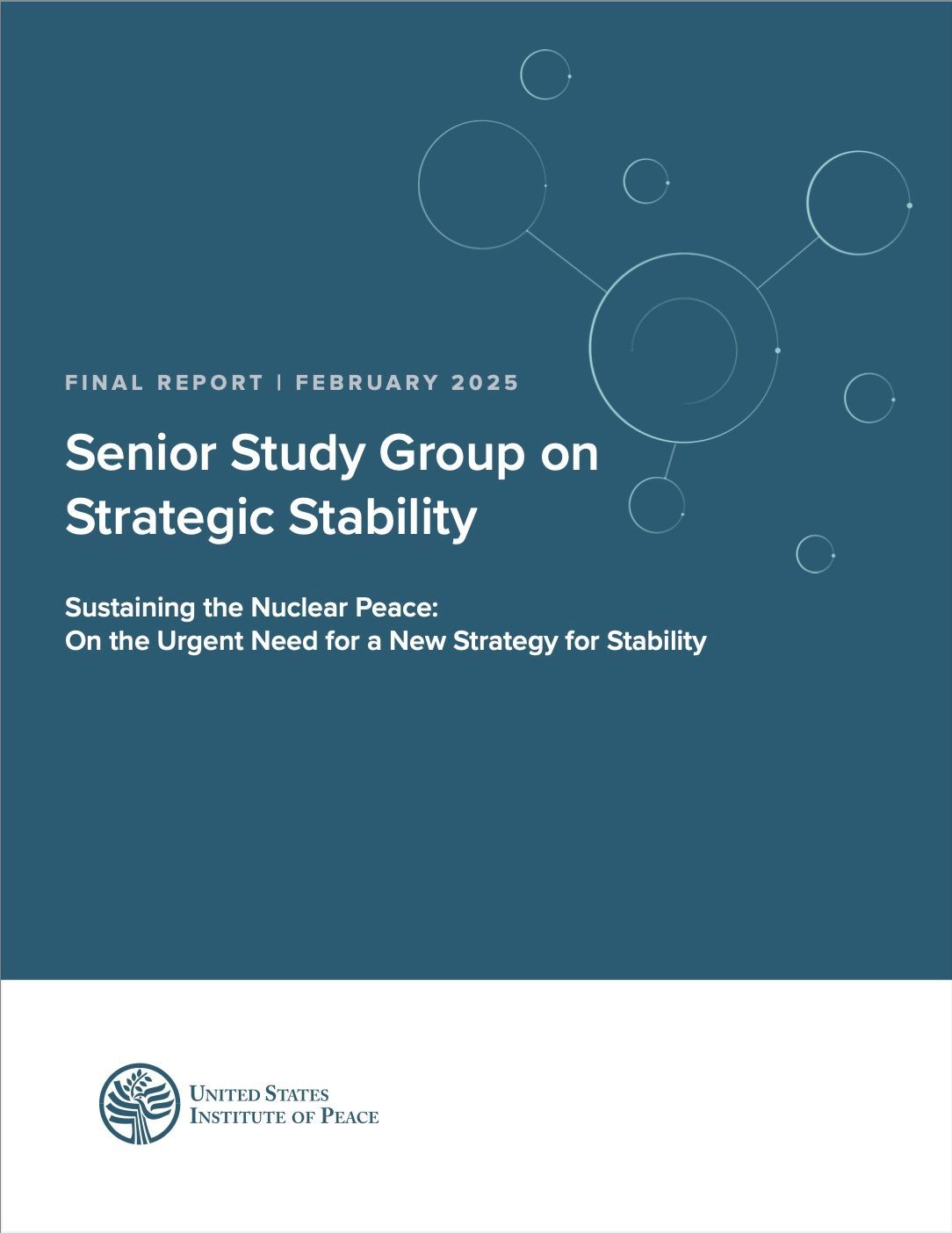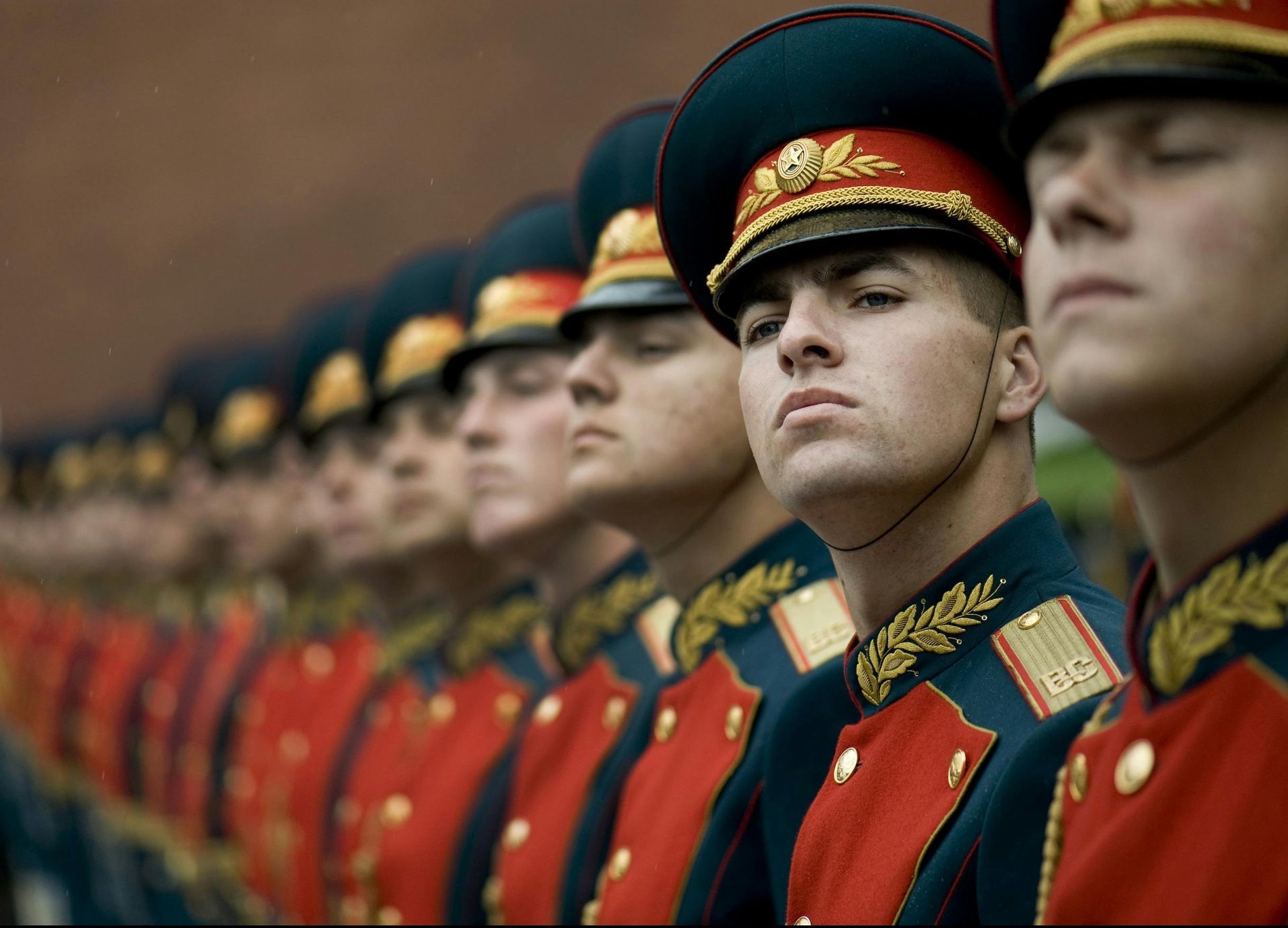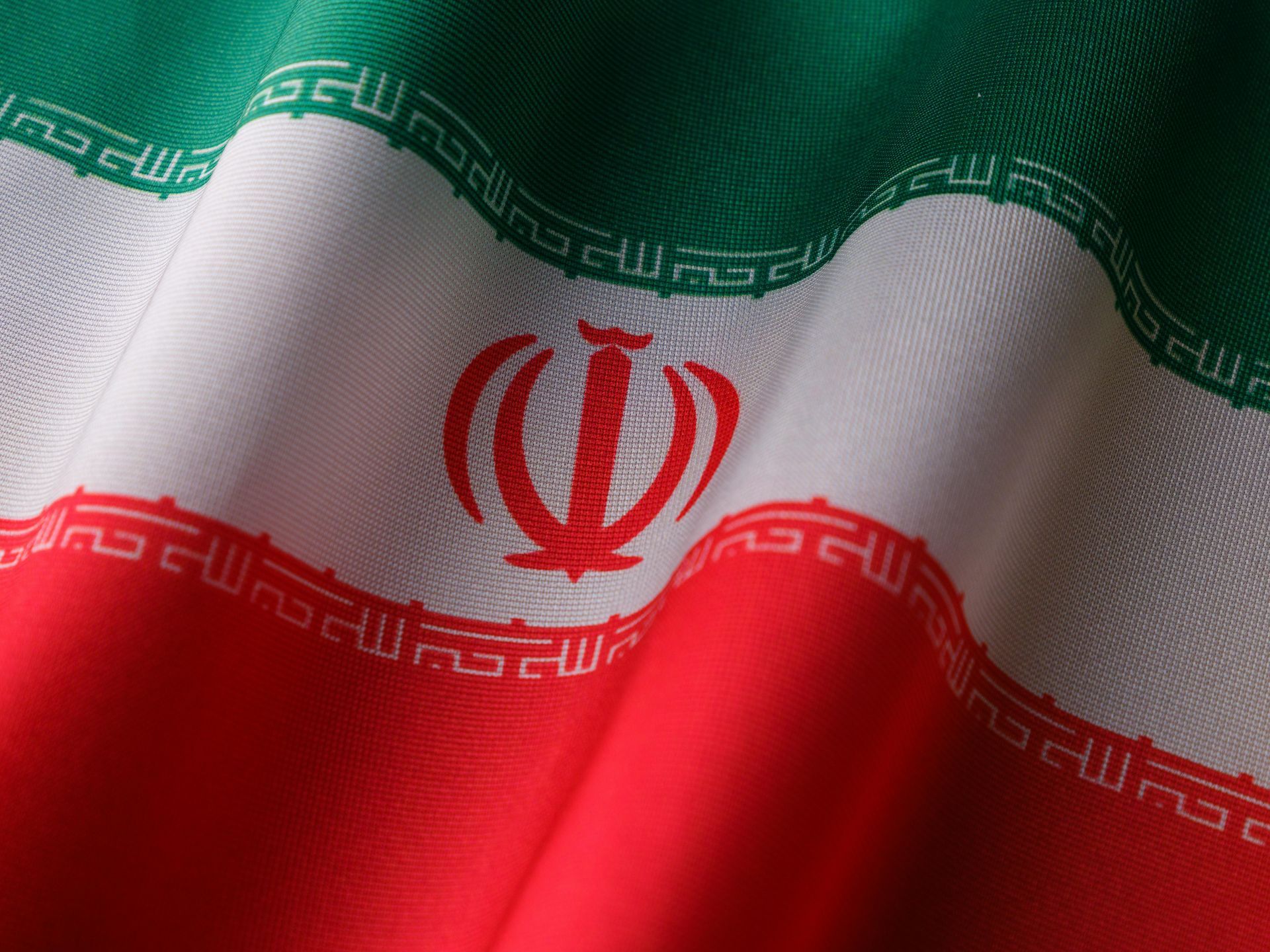Evaluating Contemporary Nuclear Risks
Below is the prepared text upon which Dr. Ford drew in his panel discussion for an even sponsored by the New York State Bar Association on "Nuclear Weapons and International Law" on January 30, 2025.
Giving good answers to the questions the organizers have asked us to discuss would probably take an entire book, so I doubt we’ll do full justice to them here this morning. That said – and with the caveat, of course, that these are solely my personal views, and don’t necessarily represent those of anyone else – I’m happy at least to offer a few thoughts.
In general, I think you’ll find a consistent theme running through my contributions here. That theme is that in our current strategic circumstances, nuclear risks are indeed rising, but that in order to manage these risks – and ultimately reduce them through some form of negotiated restraint, or perhaps even eventual reductions – we need first and foremost to counter our adversaries’ nuclear advances with by augmenting our own nuclear and conventional capabilities, thus buttressing deterrence and restoring strategic stability.
Measuring Nuclear Risk
But let me first say a word about nuclear risk assessment. As far as I can tell, there is no truly systematic process in place in government for that. This isn’t exactly a criticism, however, for I doubt it is actually possible to evaluate nuclear war risks in anything remotely as rigorous and objective as one might assess, say, the danger of a suspension bridge collapsing under certain physical conditions of load, temperature, cross-winds, or whatever.
Let’s take as an example the famous (or infamous) “Doomsday Clock” publicized by the Bulletin of the Atomic Scientists, which has shifted over the years but is currently supposedly set at a highly dangerous “89 seconds to midnight.” (The number was just reduced this week from 90 seconds.) I have no doubt the editors of the Bulletin would like us to believe – because they are “atomic scientists,” after all – that determination of the clock’s setting is, well, in some meaningful sense “scientific.”
But it isn’t, of course. It is a subjective choice made by a small group of people who have an explicit policy agenda and who make no bones about using the clock’s supposed settings as part of a public relations and lobbying campaign in favor of that agenda.
The Doomsday Clock was dreamed up in 1947, and until 1973 its “time” was apparently set at the discretion of one man, the editor of the Bulletin, a scientist and disarmament activist named Eugene Rabinowitch. Nowadays, it’s set by the Bulletin’s “Science and Security Board,” but the settings are still a fundamentally political choice, one explicitly intended to be a spur to activism. (As the University of Chicago quotes one member of that board, “Agitate for change!”)
This doesn’t mean that their choices are necessarily “incorrect” – whatever that means – but there is clearly something inherently unrealistic and problematic about trying to distill an entire planet’s worth of complex and interacting human and geopolitical variables into a single arbitrary metric of “seconds before midnight,” especially when this metric is set by anti-nuclear activists who work for a an organization explicitly founded in order to oppose nuclear weapons, and who openly use these settings as part of an annual public relations campaign. I certainly, wouldn’t quarrel that we are in a very dangerous time right now, but intellectual honesty requires admitting that the “Doomsday Clock” is basically “PR.”
Fortunately, I’ve never come across anything like that kind of pseudo-quantified and pseudo-objective risk assessment in government. It has been reported that at one point early in the current phase of the Ukraine war, the CIA assessed that – in the New York Times’ apparent paraphrase – “the likelihood of nuclear use might rise to 50 percent or even higher.” Even then, however, the Times carefully notes that, in truth,
“[n]o one knew how to assess the accuracy of that estimate: the factors that play into decisions to use nuclear weapons, or even to threaten their use, were too abstract, too dependent on human emotion and accident, to measure with precision.”
That alleged assessment, moreover, only concerned the likelihood of using perhaps even a single weapon on the battlefield by the much-studied Vladimir Putin under certain very specific circumstances of what were then significant Russian battlefield reverses. So even if that claim really somehow represented a solid metric, I certainly wouldn’t put a lot of stock in anybody’s overall, generalized risk assessment.
That said, U.S. officials clearly do pay a lot of attention to nuclear risks. In fact, for many of them in the strategic deterrence, arms control, and nonproliferation worlds, managing those risks is precisely their job. Risk is thus is taken very seriously indeed, but in my experience, at least, risk evaluation remains qualitative, fuzzy, and subjective – and unavoidably so, I fear. It’s probably to the government’s credit that it has not played “Doomsday Clock”-type public relations games with the serious business of defense, deterrence, and strategic stability, but it is probably also the case that we will wait in vain for a truly “scientific” answer.
Nuclear Risks Today
So acknowledging my own subjectivity here, of course, what can be said about nuclear risks today?
As noted, I would agree that they are pretty high right now. Unlike disarmament activists, however, I don’t believe the crux of the problem is the mere existence of nuclear weapons, much less the growing interest in U.S. policy circles – as evidenced, for instance, in the unanimous bipartisan conclusions of the Strategic Posture Review Commission report in 2023 – in augmenting American nuclear capabilities in order to respond to dangerous trends in the strategic environment. To my eye, the core of the problem lies elsewhere.
Specifically, I believe the biggest risk of nuclear use arises out of the potential escalation of a conventional conflict between nuclear-armed states and/or their allies. And there is no small likelihood of such a conflict today, because the revisionist powers of Russia and China, each with ambitions of territorial expansion against its neighbors, are both expanding their nuclear arsenals and have been developing increasingly formidable conventional forces capable of acting on their dreams of aggression. (In Russia’s case, of course, this is already happening.) Accordingly, the risk of nuclear war is unquestionably higher than it was a few years ago, before those two powers began to bare their territorially-acquisitive teeth as they do today.
Worse still, Russia is demonstrating how such aggressive territorial ambitions can be facilitated by nuclear saber-rattling, as Putin employs threats of potential use not to deter aggression but rather to deter anyone from trying to impede his aggression. I call this phenomenon the “offensive nuclear umbrella,” and it is profoundly destabilizing. Indeed, it is destabilizing by design, for the whole point is to use nuclear threats and risks as tools of offensively-oriented coercive bargaining.
Russia used years of arms control violations to help position itself for such destabilizing gamesmanship, and we now see the result. With China now sprinting toward a posture of at least numerical parity with the United States within the next ten years, moreover, I fear Xi Jinping is learning from Putin’s Ukraine playbook as the People’s Liberation Army prepares for a possible invasion of Taiwan.
So where do the biggest nuclear risks come from? Right there: from Russian and Chinese nuclear-facilitated revisionism, and from the potential failure of defensive deterrence against one or both of them if more is not done to shore up Western military postures.
Of course, I’d be remiss if I didn’t also flag the risks that have arisen from nuclear weapons proliferation – both in the past, to North Korea, and potentially also soon to Iran. There is no strategic stability upside to having nuclear weapons in the hands of a volatile and unstable dictatorship that thrives on threatening and destabilizing its neighbors, and it’s easy to imagine things in both of those regions going rapidly downhill fast.
Let me emphasize, however, that I don’t see significant nuclear risk – or at least not significant risk relative to the other ones I’ve just mentioned – coming merely from the existence or nuclear weapons or even from a nuclear arms race, though I’d dearly like to avoid the latter. If anything, given that both Russia and (especially) China are now currently “racing” to augment their own capabilities and build up their nuclear numbers even while we Americans don’t – and given Russian and Chinese threats against their neighbors – I see the greatest nuclear risks coming about if we in the West fail to respond to the challenges they present.
I would certainly love to avoid an arms race, but a nuclear competition between adversaries whose relative positions do not thereby dramatically change is likely to be more stable – that is, less risky – than allowing a situation of decisive strategic or theater overmatch to develop. This is especially true if such overmatch were to advantage a revisionist power inclined toward using nuclear threats as a tool to support its territorial self-aggrandizement, as is the case with Russia today and perhaps also China in the near future.
As I see it, the most important way to reduce nuclear risks right now – and to avoid the worst implications of nuclear arms “racing” as well – involves augmenting both the nuclear forces and the conventional military power of the United States and its allies in order to shore up deterrence in the face of systematic Russian and Chinese efforts to undermine it. Arms competitions are highly undesirable, but a failure of deterrence would be immeasurably worse. We forget this at our collective peril.
Given the role of nuclear weapons in Russian and Chinese strategy – and or own need to preserve deterrence in part with nuclear weapons in response to their challenges – I see little prospect for arms control, much less for arms reductions, at the moment. Nevertheless, I hold out hope that we can do better in the years ahead.
As I have emphasized recently, if there is a way back into arms control – and especially numerical arms control – it probably leads through the statecraft of deterrence:
“…[I]f there is a pathway to a future of negotiated restraint, it will require changing the incentive structures perceived by our collective geopolitical adversaries. At the moment, those adversaries clearly don’t feel any need to talk, for they would seem to be doing quite well by building up their arsenals and intimidating their neighbors while we [in the United States], for the most part, sit placidly on our hands and resign ourselves to early-1980s force posture concepts and a late-1990s approaches to infrastructure capacity [and force sizing] that are entirely inadequate to the times.”
“Unless the Western powers shift emphatically back into ‘compete’ mode after a generation of nuclear shrinkage, those adversaries will feel no need to change course – and in that case, you can forget about meaningful arms control, much less some future return to reductions. If they do, however, I think it may well be possible to work our way back to meaningful arms control, and perhaps even to more forward progress on disarmament.”
Laws and Norms
Let me conclude with a word about laws and norms, since that is a topic I am sure is of great interest to you at the New York State Bar Association. Frankly, I wish laws and norms were of more importance in these contexts, but one of the reasons we face the nuclear risk problems we do today is the Kremlin’s willingness to ignore such niceties.
Russia continues to flout international law in its quest to extinguish the sovereign existence of its neighbor Ukraine, it commits all but daily war crimes there, and it has broken almost every arms-related treaty is has ever signed, the Intermediate-range Nuclear Forces (INF) Treaty, the Conventional Forces in Europe (CFE) Treaty, the Open Skies Treaty, the New START agreement, the Chemical Weapons Convention, and the Biological Weapons Convention. Indeed, as I mentioned, it is in part Russia’s willingness to break arms control agreements such as the INF Treaty that has helped Vladimir Putin acquire the advantage in theater-range nuclear forces that he has made such an important piece of his “offensive nuclear umbrella” strategy.
Putin’s ability to violate that treaty while trusting that we would scrupulously abide by its terms – coupled with our unwillingness to do anything beyond merely wagging our fingers at him about it over the better part of a decade while he took his illegal INF-class cruise missile from its first flight test into full production and then deployment – shows that asymmetric interest in and commitment to arms control is part of the problem. I wish it could be said that laws and norms offered even the slightest way to help curb the Russian behavior that is doing so much to destabilize Europe and raise nuclear risks, but there’s no sign of it.
As for Article VI of the Treaty on the Non-Proliferation of Nuclear Weapons (NPT) – that provision so beloved of the disarmament community – the contempt for arms control shown by our great power revisionist rivals makes Article VI all but useless here too. That article obliges all States Party to the NPT to “to pursue negotiations in good faith on effective measures relating to cessation of the nuclear arms race at an early date and to nuclear disarmament.”
As I have been pointing out for years, however, “pursuing negotiations in good faith” is doomed to be fruitless if one’s would-be counterparty either rejects negotiations entirely or displays bad faith. And that is, alas, the case with China and with Russia. Since neither one of those powers particularly cares about arms control in the first place, moreover, it also doesn’t do much good to point out that their conduct is a violation of Article VI – as has been persuasively argued with China, for instance, by my former State Department colleague Thomas Grant. They just don’t care.
For reasons similar to what I outlined earlier, therefore, if there is a pathway back to arms control – and to actually achieving negotiations on disarmament as Article VI encourages – it probably lies through the statecraft of defense and deterrence. Our strategic adversaries need to be made to perceive concrete incentives to negotiate with us, and to keep the promises they make therein, that they clearly do not presently see. And that won’t happen just because a bunch of lawyers sign documents denouncing those countries for their lawlessness. Remember: unscrupulous and even lawless risk-manipulation is not a “bug” but rather a “feature” of revisionist grand strategy.
As for China’s almost humorously disingenuous idea of a multilateral nuclear “no-first-use” (NFU) treaty, it doesn’t even pass the snicker test. As I’ve been pointing out since at least 2011 and as I explored more extensively in the Chinese connection just a year ago, NFU promises of any sort are something of a joke: they are really reliable only with the counterparties and in the circumstances where one needs them least (i.e., with countries you trust), and they are least reliable where they would seem to be most necessary (i.e., with adversaries, especially in a crisis).
Even if an NFU convention could actually be trusted, moreover, it is as likely to be a destabilizing invitation to conflict as it is to lower nuclear risks, for NFU would risk sending the signal to a powerful regional aggressor such as China or Russia that it could invade a small U.S. ally with nuclear impunity. NFU, in other words, would be a death-knell for the “extended nuclear deterrence” upon which the United States and its alliance partners have relied for generations to deter aggression. (As such, it would also likely be a powerful driver for proliferation, by giving such would-be victim countries incentives to engage in nuclear weapons development themselves to replace the American nuclear protections of which NFU would have robbed them.) It’s easy to see why China might wish to entice us into the silliness of an NFU treaty, but it’s equally clear why that would be a terrible idea – not just in general, but specifically from the perspective of reducing nuclear risks.
Conclusion
So this brings us back to my central theme: the dire need, in response to the rising nuclear risks presented by Russian and Chinese behavior, to buttress deterrence and pursue the statecraft of strength. Such strength is in no way inconsistent with pursuing arms control and even disarmament, and indeed may be the only way to persuade our strategic rivals to re-engage on such topics.
These are not pleasant times, and these are surely not pleasant truths for the disarmament community to hear. But truths, I submit, they are.
— Christopher Ford







